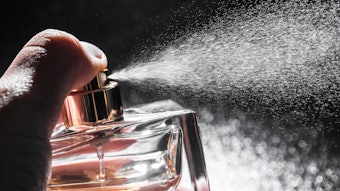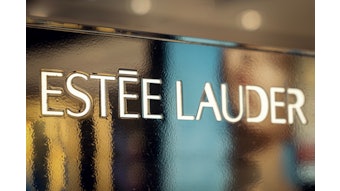Editor’s note: This article originally ran in the Industry section of the December issue of Perfumer & Flavorist magazine. Reprinted with permission. All rights reserved.
Successfully creating a masterpiece fragrance that touches consumers on an emotional level is no easy feat, which is why several industry notables gathered at the Fashion Group International’s “Art of Scent” event at Space 530 in New York to discuss the art of scent, key marketing strategies and business issues that face the industry today. The panelists included Rodrigo Flores-Roux, senior perfumer at Givaudan; Victoria Frolova, editor and writer of the Bois de Jasmin blog and contributor to Perfumer & Flavorist magazine; Laura Slatkin, founder and CEO of Nest Fragrances; and Art Spiro, executive vice president, global fragrance innovation, Elizabeth Arden.
“I saw a business opportunity,” said Slatkin, opening the panel by discussing her foray into the fragrance market in 1994 following a Wall Street career with Lehman Brothers. “I said, ‘There’s just a whole industry just waiting to happen.’ So we worked and we learned all about the fragrance industry.”
She added that her inspirations mainly come from cooking, working with flowers and entertaining. In fact, the home fragrance expert said one of her scents was inspired by an event at her home during which she served fragrant Indian and Persian dishes. “‘This smells delicious, what [candle is] burning in here?’” Slatkin’s guests remarked. “I thought, ‘It does smell fantastic,’ and that was how Moroccan Amber was born,” said Slatkin. “We looked at all of the Indian spices that went into that dish and the particular ingredients and that’s how that fragrance came about.”
Another inspiration was a vestibule filled with beautiful hyacinths: “There was a [fragrant] rush of hyacinths. [A] candle came about through that,” she noted.
Frolova, who originally planned to be a scientist, began working in the fragrance industry because fragrance piqued her curiosity. “I was so curious and passionate about fragrance, [so] I got a job in the fragrance industry for several years,” she said. She added that fragrance is an artistic endeavor that has the ability to form a close connection with the consumer. “When you find the fragrance that touches you at an emotional level, it’s such an extraordinary experience,” Frolova said.
“Perfume is a conversation,” Flores-Roux added. The perfumer, who said he’s working on a new John Varvatos fragrance, is focused on storytelling through scent. For instance, Flores-Roux’s sister called to tell him that she wore the Mary Kay fragrance he created for the birth of her child, his nephew. “I told the story at the Mary Kay symposium … [and] there [were] 5,000 pink clad women and they cried,” said Flores-Roux. “This fragrance is very emotional.”
Flores-Roux also defined a successful fragrance as having a number of elements, including the fact that “the fragrance has to remind people of you when you go.” He also said a perfumer has to consider, “Is the strength just right?” The trail, he added, is crucial.
Spiro said perfumers “bring that emotional connection, that scent to life to the consumers. We’re trying to bring joy to people’s lives.” Although the bottle and packaging may catch someone’s eye, “the heart of soul is the fragrance itself,” said Spiro. “That’s what that we’re drawn to. The olfactive element is the enjoyable part of the human experience.”
There’s also the potential fan factor. Spiro cited a number of examples of the whirlwind of information that fans can gather about celebrities and the creators of their favorite television shows. However, he said, when it comes to fragrances that aren’t backed by a celebrity household name, “when you buy a fragrance, all you really know is the model [who] really has no association with the development of the fragrance, in most cases, but then again there are certain exceptions. But there really isn’t the opportunity to let the consumer in. And I see that as a huge opportunity. How many times have you seen the perfumer put at the forefront of the creation of a fragrance?”
Spiro said some companies have featured their perfumers on their websites, but added, “We don’t do that often enough. And that’s an opportunity for people like us as marketers who drive this business to share more of the artistry of how fragrance is created. We work on a craft [in which] there are so many things going on that we never share with the community.”
According to Spiro, there are certain elements that contribute to the success of the whole experience of fragrance. Using the Kashi brand as an example, Spiro questioned whether, like food companies, fragrance brands could market “natural” ingredients and their sourcing techniques to consumers. “We spend more time and energy on packaging than we do talking about the ingredients, the sustainability,” he said.
Spiro added that fragrance brands have the unique ability to create a connection to the consumer when he or she walks in a store. “When it’s Halloween, you can put a bale of hay and a pumpkin and sell the same fragrance and the same body lotion that [the retailers] were selling three months before, but all of a sudden it creates a new feeling for the consumer. So it’s the experience I think that we really need to focus more on.”
He also noted, “There are traditional and conventional ways of selling fragrance, and [then] there’s a new way.” He questioned why a typical fragrance sales pitch at a brick-and-mortar retailer begins and ends swiftly with a brief mention of the product and the gift with purchase, whereas online and broadcast channels offer approachable opportunities to talk about products.
“[On] QVC [and] HSN, you can talk about perfumery, you can talk about sustainability, you could talk about naturals. You could also talk about technology. We live in a technology-driven world. We communicate more online through websites than we’ve ever done before. So why not open it up … and share some of it?”
Frolova agreed and noted that many perfumers are worried about disclosing their formulas. “I think sometimes we’re a little scared to talk about what goes into our perfumes,” she said. “So much of the formula is not protected, which is why the fragrance industry operates in this way. If you try to explain it to an outsider, it seems almost unreal. IP [intellectual property] protection is extremely important because without some sort of protection, there’s less incentive to innovate, less incentive to share. In our industry, we are not prone to talk too much about what’s in a fragrance bottle, how the creation happens—but in some ways it’s changing.”
“I don’t think the basic structure of fragrances has changed dramatically,” Spiro said of pushback from non-governmental organizations (NGOs) and consumer groups. “The materials that we use are probably safer today than they have ever been.”
“The media has been pretty negative on celebrity fragrance launches,” said Spiro of how one measures success in fragrance. “However, the excitement and emotional connection that most celebrities have with their fans is amazing. The way they connect via social media is truly a connection that we could never have with a TV commercial or with a print campaign.”
Spiro added that the definition of success could be very different according to the brand. “You need to figure out the art of distribution,” he said. “There are so many different elements that contribute to success.”
Slatkin, who has launched a great number of brands and fragrances over a 20-year period, said the unusual thing about fragrance is that the scent can be amazing, as well as the packaging and PR. And, yet, she said, “You put it on the shelf, and it just doesn’t sell. We have all experienced it. And I can tell you, I have experienced it so many times. So you just never know. Sometimes it’s about having a great retailer, the right consumer, the right packaging, the right fragrances … And sometimes you know you can package this brand and it fails, and [you] put different packaging on it and it flies out the door. So I think it’s all about the perfect storm for fine fragrance.”
Slatkin added, “Sometimes it’s just about different ways of [selling], and Art [Spiro] was talking about this before—in the wave of the future, how do we sell fragrance? Sephora has a real magical way of selling fragrance, and it works. And it works for my brand, and it resonates and it’s terrific.”
Frolova said success is simply defined by a great product. “A great fragrance is number one,” she commented. “So it’s not just the concept, it’s not just the marketing, even though all of that is important, but the moment that people can feel that a lot of work and passion went into the bottle, it’s essential. Without that it can’t be a success.”
“And of course, all of us try to determine what’s going to hit off the chart,” Frolova continued. “Some fragrances take time. Angel was not an overnight success. It took a lot of effort by Clarins for it to take off. It took a lot of education and educational initiatives as part of the brand to make it the success that it is today. So a lot of combinations of different factors are essential. Sometimes when you look for a success or try to make a success, it’s much more important to remember what’s inside the bottle. In the end what’s left is on customer’s skin—and that’s what matters the most.”










